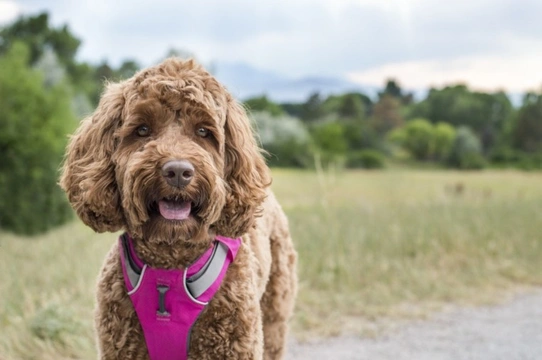
Five ways to make your dog’s hayfever or seasonal allergy less irritating
A reasonable number of dogs are allergic to something, and almost anything you can think of could be a potential allergen for a dog. However, hayfever, pollen allergies and other types of seasonal allergens are some of the most common allergy types found in dogs, and also, some of the hardest to tackle and manage.
Whilst some allergies – like food allergies or contact allergies – can be mitigated successfully by identifying the exact source of the allergen and removing it from your dog’s life, when it comes to pollen and other airborne allergens that are all around us at certain times of the year, preventing your dog from becoming exposed to them at all is impossible.
This means that keeping your dog comfortable and minimising the effects of their allergies has to be reactive rather than preventative, and will never be 100% successful – but it can make a big difference to your dog’s general happiness and wellbeing.
In this article we will share five things that you can do to make your dog’s hayfever or seasonal allergies less irritating for them, and to help to keep them more comfortable during allergy season. Read on to learn more.
Keeping allergens down within the home
Pollen and other airborne particles are too small to keep out of your home entirely, unless of course you live in a hermetically sealed bubble!
However, there are several things that you can do to keep allergens down within the home itself, so that your dog can get some respite from their allergies as far as is possible.
First of all, keep cut flowers and anything else that might bring in pollen and other allergens outside, and wipe your shoes off and leave them by the door when you get home, in order to avoid tracking allergens into the house.
Carpets and soft furnishings should be hoovered regularly with a vacuum cleaner that is designed to remove small particles like pollen (often marketed to allergy sufferers and containing additional filtration systems) and you might also want to use air filters too to help to clear the air itself.
When it comes to your dog’s bed and accessories, ensure that these are washed and wiped off regularly too, and keep different things for use outdoors so that you can minimise allergens brought in with you.
Keeping allergens off your dog as far as possible
When you and your dog get back from a walk, wipe their paws and whole body over with dog-safe cleaning wipes or a soft, damp cloth that is washed ready for use next time.
Bathe your dog regularly too using a gentle and soothing shampoo, and this will both remove pollen and other allergens and may help to ease any itching and discomfort that occur as a result of allergen exposure.
Where, when and how you walk your dog
Check the pollen forecast ahead of time so that you can get a handle on when your dog’s allergies are more likely to play up, and try to walk your dog at times of the day when the air is still rather than breezy, to reduce the amount of allergens in the air.
Walk your dog away from long grass and other areas where there is a lot of foliage – and when your dog’s allergies are really bad, consider taking them to a doggy daycare or activity centre instead to provide their daily exercise without so much exposure to the outdoors.
Medications and management
Keeping on top of your dog’s allergies is something that you need to work on with your vet, to find the right balance for them in terms of medications that can help to lessen the severity of allergies and help to treat the symptoms.
Antihistamines can help to mute the body’s responses to allergenic triggers and make your dog’s reactions less acute, and there are many different types of antihistamines and so your vet will need to work with you to find the most appropriate fit.
Additionally, some dogs who suffer from severe or acute allergies might need other medications too, either to lessen the effects of their allergy or to treat any secondary complications that their allergy is causing, such as sore, broken and irritated skin that can soon become infected and that may not heal very easily because your dog keeps bothering at it.
Your vet may also recommend some supplements or food additives that might benefit your dog too, but don’t give your dog anything new without checking with your vet first.
Supporting good health
Your dog’s general health and fitness is important too, and this is something that is often overlooked when looking at the big picture of dog allergies and how seasonal allergies can impact upon your pooch.
Keeping your dog at a healthy weight and fed an appropriate diet – as well as of course providing enough exercise – will help to support their general health, and this will in turn go some way towards ensuring that the general affects of your dog’s allergies don’t make them feel any more miserable than they need to.



